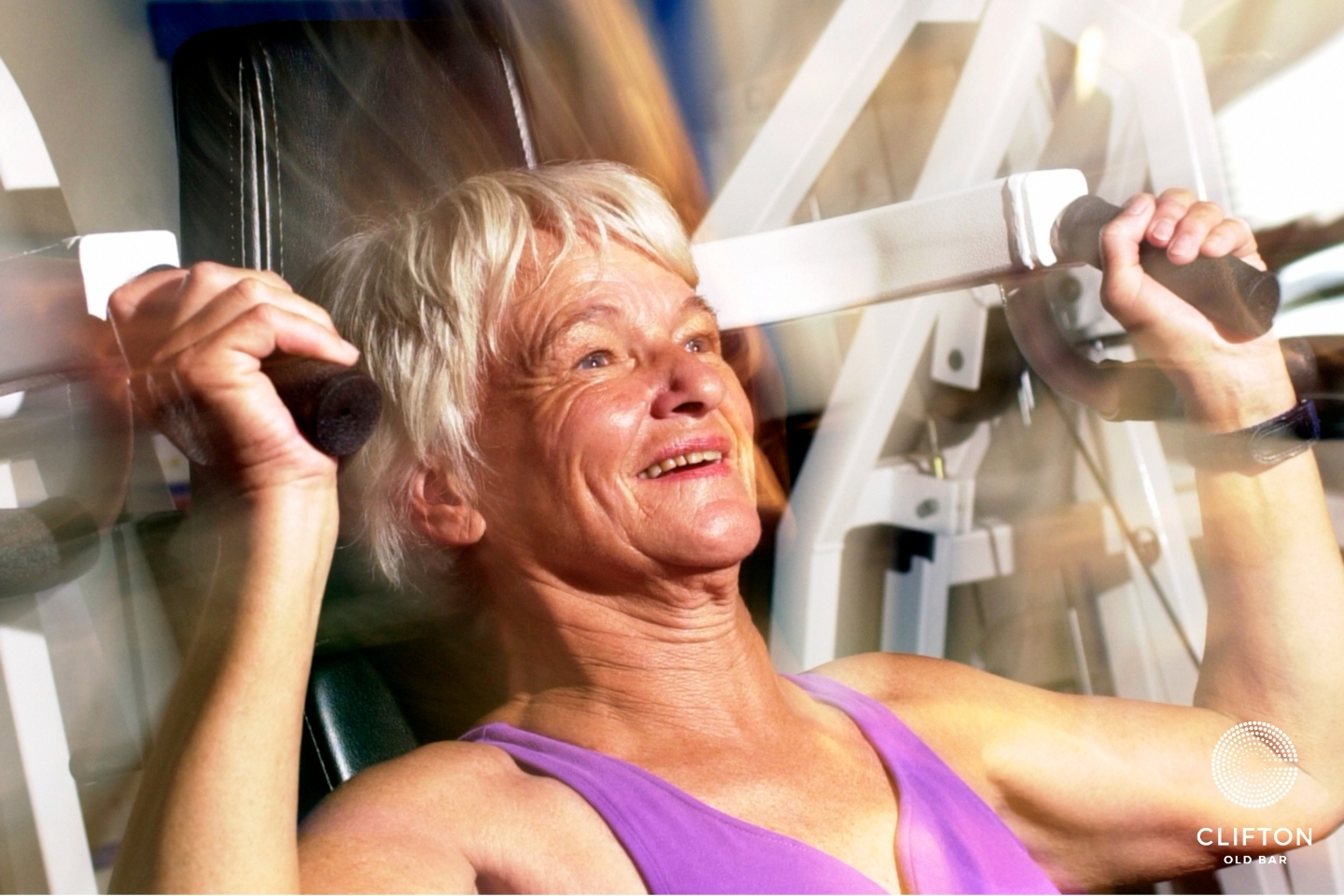
A Guide to Resistance Training for Seniors
What is resistance training?
Resistance training (also known as strength training), is the act of moving your body against resistance. Resistance training has been documented to improve balance and mobility, build strength and even slow down the aging process!
Resistance could be from your own body weight (e.g. push ups), against gravity (e.g. squats), or by using equipment such as weights as the gym.
Let’s think of resistance as a force that makes a movement harder to perform!
Why do our bodies need resistance training?
Given the way our lifestyles have changed over the past few generations, it’s no surprise that our muscles are being used less. We sit more than we ever have, and we move our bodies far less than in generations before us. The principle of “Use it or Lose it” is relevant just as much here as with many other things in life. Our bodies need to be used!
Furthermore, a lesser known condition called Sarcopenia (age-related muscle wasting) is a condition that affects all of us. After the age of 30 we lose 8-10% of muscle mass in each decade of life. When you lose strength and power in muscles, one of the greatest things affected is our capacity to balance. As we get older and Sarcopenia progresses, this means we become more prone to falls and fractures and if left unattended, it can be a strong indicator for frailty syndromes, loss of independence and general ill health in our older years.
However, using our muscles in strength or resistance based training (even if we only begin it for the first time in our Senior years) has the incredible power to slow this aging process down, and in some cases even reverse it – wow!
Not only can we slow the aging process, but many of the exercises typically used in resistance training helps to improve the overall performance of activities used in daily living that ensure we maintain independence in our older years (such as getting up off chairs, walking up stairs, lifting things above our head etc.)[1].
It has been documented that once you reach your 50s and beyond, resistance training is critical to preserving strength, movement and overall independence.[2]
The research is compelling
One particular study of over 65-year-olds looked at the benefits of strength training and longevity. The conclusion (in a summarised version) states that “Older adults who engaged in strength training at least twice a week had 46% lower odds of death for any reason than those who did not. They also had 41% lower odds of cardiac death and 19% lower odds of dying from cancer”[3].
Where does cardiovascular fitness fit in?
Walking and other aerobic (or Cardio) exercise is still an important piece in the overall puzzle of health. It has great benefits such as improving joint mobility, reducing inflammation and it can reduce the risk of heart disease, diabetes, obesity, and even certain forms of cancer.
In the ideal world you would incorporate both aspects into your weekly routine, however more recent studies place a greater importance on strength and resistance training as we age. We look forward to bringing you more information on Cardio exercise, but for now let’s turn our attention back to resistance training!
How do I get started with resistance training?
So you’re on board with the concept, but what next? It is always recommended that you check with your Healthcare Professional before beginning any new exercise. Exercises should be tailored to your own body’s needs and capabilities, and should always begin at an easy level before progressing slowly so as to avoid any injury. For those with the green light to begin resistance training, you could choose to engage with a fitness professional / trainer for guidance, or else search on the web (including YouTube) for some beginner exercises. You needn’t look any further than our Clifton Old Bar Gym if you wish to start your resistance training journey with our state of the art training equipment.
How much resistance training do our bodies need?
You don’t need to grunt, strain or sweat to benefit, and in as little as 20 minutes our bodies start to reap the rewards!
[1] https://www.youtube.com/watch?v=LkXwfTsqQgQ
[2] https://www.health.harvard.edu/staying-healthy/want-to-live-longer-and-better-strength-train
[3] https://pubmed.ncbi.nlm.nih.gov/26921660/